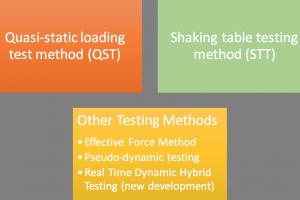Types of Seismic Analysis for Building Behavior in Earthquakes
Seismic Analysis Methods
Seismic analysis plays a crucial role in evaluating the behavior and response of buildings during earthquakes. Engineers employ various types of seismic analysis techniques to assess the structural performance and ensure the safety of structures. This article explores the different types of seismic analysis methods used by engineers to understand how buildings behave under seismic forces.
1. Equivalent Static Analysis:
Equivalent Static Analysis is a simplified approach to seismic analysis. It involves applying an equivalent static load representing the maximum expected seismic forces to the structure. This method assumes that the dynamic characteristics of the earthquake can be represented by a static load. It is commonly used for simple and regular structures with low-to-moderate seismicity.
2. Response Spectrum Analysis:
Response Spectrum Analysis considers the dynamic characteristics of earthquakes and their effects on structures. It utilizes a response spectrum, which represents the maximum response of a structure at different frequencies. By applying this spectrum to the structure, engineers can assess the structure's response to a range of ground motions. Response Spectrum Analysis is widely used for a variety of structures, including buildings, bridges, and industrial facilities.
3. Linear Dynamic Analysis:
Linear Dynamic Analysis is a comprehensive method that considers the dynamic behavior of structures. It involves solving the equations of motion considering the mass, stiffness, and damping properties of the structure. This analysis method accounts for the interaction between different structural elements and provides accurate results for structures with significant nonlinear behavior.
4. Non-linear Static Analysis:
Non-linear Static Analysis, also known as Pushover Analysis, is a valuable tool for evaluating the performance of structures under severe seismic events. This method accounts for the nonlinear behavior of structural components, such as yielding and plastic deformations. It applies incremental loads to the structure and assesses its response at each step, allowing engineers to identify potential failure mechanisms and assess the overall structural capacity.
5. Non-linear Dynamic Analysis:
Non-linear Dynamic Analysis is the most sophisticated and computationally intensive seismic analysis method. It incorporates the complex nonlinear behavior of structures and the dynamic characteristics of earthquakes. This analysis method uses advanced numerical techniques to model the behavior of materials, connections, and structural elements. Non-linear Dynamic Analysis is typically employed for critical structures and high-seismicity regions where accurate and detailed assessment is necessary.
Understanding the various types of seismic analysis techniques is crucial for engineers to assess the behavior of buildings during earthquakes. Each method offers unique insights into the structural response and helps engineers make informed decisions about design improvements and retrofitting strategies. By employing these analysis techniques, engineers can enhance the seismic resilience of structures, ensuring the safety of occupants and mitigating potential damage caused by seismic events.





